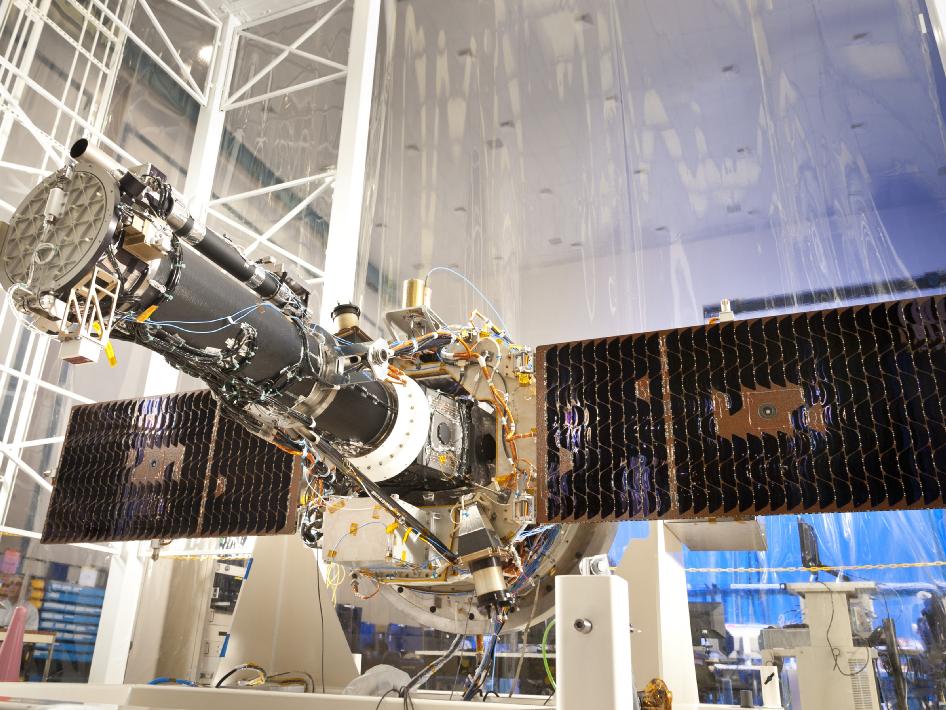The Sun.
It’s hot, there’s much we still don’t know about it and it sits at the centre of our Solar System.
Enter IRIS (or the Interface Region Imaging Spectrograph), NASA’s latest space probe.
The fully integrated spacecraft and science instrument for NASA’s Interface Region Imaging Spectrograph (IRIS) mission is seen in a clean room at the Lockheed Martin Space Systems Sunnyvale, Calif. facility. The solar arrays are deployed in the configuration they will assume when in orbit. Credit: Lockheed Martin.
Due to be launched shortly, IRIS will aim to expand our knowledge of the Sun, as well as its impact on Earth and near-Earth space environments.
Armed with a single ultraviolet telescope, combined with an imaging spectrograph, IRIS will obtain high-resolution solar images and spectra.
The mission, to observe the Sun’s interface region – a lower atmosphere region that powers the million-degree outer atmosphere of the Sun and drives the solar wind.
The research is important, not just in aiding our knowledge of solar and heliospheric science but in helping us further understand solar activity (including solar flares and massive blasts of plasma called coronal mass ejections) that can impact satellites, power grids and other electronics around and on Earth.
The Solar and Heliospheric Observatory spacecraft captured this image of a solar flare as it erupted from the sun early on Nov 4, 2003. This was the most powerful flare measured with modern methods. Credit: ESA and NASA/SOHO
For those interested in the technical specifications of the probe, the telescope’s primary mirror has a diameter of 20 cm. While it will only be able to see about one percent of the Sun at a time, it will be able to resolve that image to show features that are as small as 240 km in size. This is pretty impressive when you consider how large the Sun actually is (its circumference is about 4,366,813 million km).
Fun fact for the day – About 1.3 million Earths could fit inside the Sun!




Pingback: Solar pole flip flop | Universe @ CSIRO